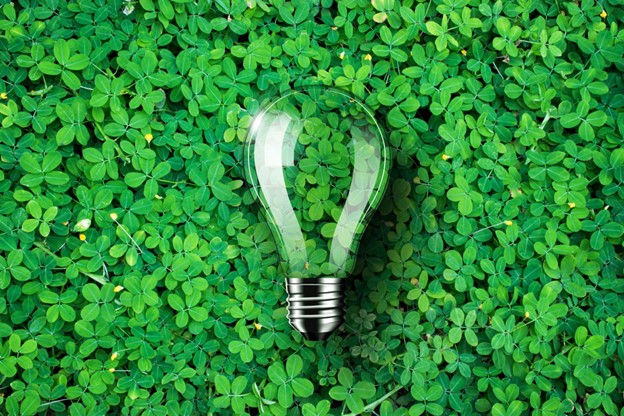All You Need to Know About Glass Recycling

Glass is a recyclable material made from a chemical compound known as silicon dioxide. It is transparent, heat resistant, a poor conductor of electricity, and does not chemically react with other substances. These physical and chemical properties of glass make it an excellent and safe container for the storage of food and beverages.
In this blog post, we will discuss all you need to know about glass recycling, but first, let’s look at some of the facts and figures for glass recycling in the USA.
Glass Recycling: Facts and Figures
Old glass bottles and containers can be recycled to make new ones. But unfortunately, in the USA, only 33% of the disposed glass bottles and jars are sent for recycling. Every year, Americans dispose of 10 million tons of glass waste, but only one-third of it makes it to the recycling plant. The rest of the glass waste ends up in landfills and oceans.
Unrecycled glass bottles are harmful to humans and wildlife. Broken pieces of glass can cause serious injuries and infections. On the other hand, recycling glass can reduce our carbon footprint and conserve our natural resources.
According to the World Wide Fund (WWF), glass produced from recycled glass products reduces air pollution by 20% and water pollution by 50%. In an article published on Stanford University’s website, it states that The San Diego County Office of Education found that by recycling one glass bottle, we can save enough energy to light a 100 Watts bulb for 4 hours or a computer for 25 minutes.
In the same article, it is further stated that 1 ton of recycled glass can save 42 kWH of energy (151200000 Joules). It is equivalent to saving 0.12 barrels (5 gallons of oil). By recycling 1 ton of glass, we can reduce 7.5 pounds of pollutants from the air and save 2 cubic yards of space in the landfills.
Why Recylce Glass?
Making glass products from scratch burdens our natural resources and causes environmental pollution. To make new glass, sand is heated to a temperature of about 1,700 degrees Celsius. A lot of water is required too, to cool the molten glass as is it being shaped. During the process of melting, the silica, sulfur dioxides and nitrogen oxides are released into the air. Both these gases are toxic in nature and responsible for the acid rains and depletion of the ozone layer.
On the other hand, recycling 1,000 tons of glass can produce 314 tons of carbon dioxide emissions. Glass can be recycled repeatedly without any difference in its quality. The glass bottles and jars that are collected for recycling are first broken into small pieces called cullet. One kilogram of cullet replaces 1.2 kg of raw materials that are needed to manufacture new glass bottles and jars. As a result, the presence of cullet derived from recycled glass can reduce the manufacturing cost for companies and at the same time conserve energy.
When 10% of cullet is added to the mixture prepared for making glass products, the amount of heat needed in the furnace to make molten glass falls by 3%. Therefore, cullet obtained from recycled glass helps protect our natural resources like oil and gas that is needed to power the furnace.
What Type of Glass Can be Recycled?
Before we tell you all you need to know about glass recycling process, it is important to understand that not all types of glass can be recycled.
Ceramic glass and decorative glass cannot be recycled. This is because other materials have been added to make ceramics and decorative glass. Products made from ceramic glass, like mugs, cups, and plates, are more durable than transparent glass. But when recycled to make new glass products, the recycled ceramics can weaken the new glass product. Instead, ceramics are broken down to their finer, powdery form and used as a construction material for making driveways and drainage systems.
All other types of glass products, especially transparent glass bottles, jars, and containers, can be recycled. You can check the recycling logo and factor number at the bottom of your glass products, in-case you are confused about whether the product can or cannot be sent for glass recycling.
The Glass Recycling Process
- Disposal:
All the empty glass bottles, jars, and containers that can be recycled are disposed of in a recycling bin which is labeled for glass recycling. Do not throw glass waste along with other waste materials because glass bottles and jars can easily break.
Small broken prices and shards can mix with other waste materials, injure the people who are collecting recycled waste and make it difficult to sort the waste at recycling plants. You can even take your glass waste to the local drop-off points, which are made especially for the recycling of solid waste.
- Collection:
Recycling companies collect these empty glass bottles and jars from the recycling bins and drop-off points. The glass waste is then taken to recycling plants, where it is stored for inspection and sorting.
- Inspection:
At the recycling plant, all the glass waste is first inspected to ensure that no hazardous substances have made their way into the glass waste. The inspection also rules out the possibility of contaminated glass. After inspection, the inspection officer will write a report and issue a certificate to state that all the glass waste that has been collected is safe for recycling.
- Sorting:
The glass waste is then sorted to further remove the contaminants and additives. These can include ceramics, mirrors, Pyrex, window glass, and light bulbs. This is a very important step because all types of glass have different thickness, melting points, and chemical properties. During the sorting process, the glass waste may also be sorted according to color and size.
- Breaking:
A machine is used to break all the glass waste into small particles. These particles can be so small that they often get blown away by the air and cause injury to the worker. To stop the glass particles from becoming airborne, water is sprayed in the form of mist as the machine’s churning action breaks down the glass waste.
- Trommel Screen:
This is the step where the broken pieces of glass are separated according to the size. The broken pieces are passed through a trommel screen, which looks like a revolving screen. Inside the rotary screen, the labels and stickers that might still be on the broken pieces of glass bottles and jars are removed by a fan. This ensures that only glass pieces are recycled. Even caps, corks, and lids are separated at the trommel screen. Only the glass waste passes through these revolving screens.
- Fluidization:
This is the step where the small glass particles are placed in a small drier that is about 4 inches in size. The particles are then dried using a vibratory action and heat. The temperature inside the drier is 190 degrees Fahrenheit. This is also a method of purification. The heat inside the drier kills bacteria and loosens the glue that may have been used to stick the labels on the glass bottles and jars. At the top of the drier, there is a suction system that sucks all the impurity and dried glue.
- Screening:
The clean and dry glass particles are screened and sorted into different sizes. This is important because all the recycled glass will be used to make new glass products, and therefore, should be of a particular size. For example, the recycled glass that becomes the raw material for fiberglass must be 12 mesh in size.
- Pulverization:
This is the process where the bigger pieces of glass, that couldn’t pass through the trommel screen are taken to a pulverizer. A pulverizer is a machine that breaks the glass pieces down to finer glass particles. This machine has 36 hammers attached to it, whereas the one used during the first breaking process has 24 hammers attached to it.
The finer glass particles are again run through the trommel to check if all the pieces are small enough for recycling. These glass pieces are placed in a pulverizer repeatedly until all the particles are small enough to pass through the trommel.
- Advanced screening:
This is an advanced screening process. The glass particles are passed through various rotary screens to separate the particles into 4 different sizes.
- 12 mesh to 20 mesh
- 20 mesh to 40 mesh
- 40 mesh to 70 mesh
- 70 mesh and smaller
This is done so that different sizes of glass particles can be used to make different kinds of glass products.
- Classification:
These glass particles are then further sorted as glass cullet. The 3 kinds of glass cullet are:
- Pebbles
- Sand
- Powder
- Reusing:
The 3 different kinds of cullet are then reused and mixed with other raw materials to produce new glass products. For example, powdered glass is added to the cement and used for construction. On the other hand, glass pebbles are used for decorations.
Final Words
Recycling of glass waste protects our environment, conserves energy, and saves our natural resources for future generations. We hope that after reading our blog post on all you need to know about glass recycling, you will consider recycling the empty glass bottles and jars.
If you need more information on glass recycling or safe disposal of large windowpanes or glass doors, please contact us here at Titan National. We offer dumpster rental service in and around Detroit, Michigan.







